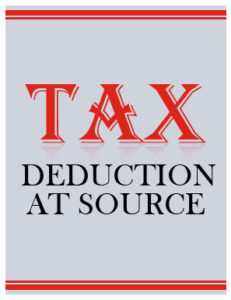
Depreciation is amount decrease in value of Fixed assets and charged in to operational Expenses over the life of assets. In other words we can say that depreciation is decrease in the value of the assets due to use,obsolance,wear and tear
Depreciation is required both for
(1) Accounting Purpose
(2) Tax purpose
Here I am providing you ,a very easy way to understand various depreciation method and its Journal Entry
Q What is the accounting journal entry for depreciation
Answer:
For example PQR Company calculates that it should have $1,000 of depreciation expense . The entry is:
| Date |
Description |
Debit |
Credit |
| 31-Dec-16 |
Depreciation Expenses |
1000 |
|
|
To accumulated Depreciation |
|
1000 |
or you can pass the entry in the following way
| Date |
Description |
Debit |
Credit |
| 31-Dec-16 |
Depreciation Expenses |
1000 |
|
|
T0 Assets |
|
1000 |
Now we will check different depreciation method
Following are listed Depreciation method
- Straight line method
- Double Declining method
- Sum-of-the-years’-digits method
- Annuity method
- Machine hour rate method
(1)Straight line method
This is also known as fixed percentage method .In this method equal amount is allocated for each accounting period as depreciation expensses.The formula of straight line method of depreciation is cost minus Salvage value divided by years of life
=( Cost-salvage Value) / Useful life
Example
fixed asset having a useful life of 5 years is purchased on 1 January 2012. Cost of the asset is $11,000 whereas its residual value is expected to be $1000.
Calculation of depreciation under Straight line method
=11000-1000/5
=2000 Depreciation each year
| Year |
Opening
Balance |
Depreciation |
Closing
Balance |
| 1 |
11000 |
2000 |
9000 |
| 2 |
9000 |
2000 |
7000 |
| 3 |
7000 |
2000 |
5000 |
| 4 |
5000 |
2000 |
3000 |
| 5 |
3000 |
2000 |
1000 |
| Sale |
|
|
-1000 |
| Balance |
|
|
0 |
(2)Double Declining Method
This is accelerated method of depreciation in which higher depreciation is recognized during the first few years of its useful life. This method is used under the following cases
(1) when the use of assets is at rapid rate during the early part of its useful life;
(2)When company wants to recognize more expense at early stage, thereby shifting profit recognition further into the future (which may be of use for deferring income taxes).
There are two approach one is accelerated depreciation by 200% and another is accelerated by 150%
Double-declining balance (ceases when the book value = the estimated salvage value)
2 × Straight-line depreciation rate × Book value at the beginning of the year
Or if accelerated by 150% then the formula will be as follow
1.5× Straight-line depreciation rate × Book value at the beginning of the year
Now we will see the example
Take the above straight line case , in this case the rate of depreciation is 20%
so in double declining we take 40% i.e.2 x 20%,Ckeck the following
| Year |
Initial Cost |
Depreciation
rate |
Depreciation |
Ending
value |
| 1 |
11000 |
40% |
4400 |
6600 |
| 2 |
6600 |
40% |
2640 |
3960 |
| 3 |
3960 |
40% |
1584 |
2376 |
| 4 |
2376 |
40% |
950.4 |
1425.6 |
| 5 |
1425.6 |
40% |
425.6 |
1000 |
Last year depreciation amount is adjusted to the Salvage value
(3) Sum-of-the-years’-digits method
This method of depreciation is another method of accelerated depreciation. Depreciation is calculated as a fractional part of a sum of all the years.
Example:
In the above example if we apply Sum-of-the-years’-digits method then an asset has a life of 5 years and total is 15 calculated as 1+2+3+4+5 = 15
Now see the following table
| Year |
Time
remaining |
SYD |
Applicable
rate |
Annual Depriciation |
| 1 |
5 |
5/15 |
33.33% |
3333 |
| 2 |
4 |
4/15 |
26.67% |
2667 |
| 3 |
3 |
3/15 |
20% |
2000 |
| 4 |
2 |
2/15 |
13.33% |
1333 |
| 5 |
1 |
1/15 |
6.67% |
667 |
|
|
|
|
10000 |
(4) Annuity method of depreciation
The other method of depreciation do not take into account the interest lost on capital invested in the asset. This Annuity Method Consider this.
In this annuity method an interest at fixed rate on the opening balance of asset is debited to asset account each year and then the cost of asset together with interest thereon is written off equally over the life of the asset
Example
Suppose a lease is purchased on 1–1-2011 for the 4 years for the cost of 10,000 .Company proposed to depreciate lease by annuity method by charging interest at 5 %.Annuity table shown to $1 for 4 years at the rate of 5% you must written off sum of 0.2820 each year. the whole calculation for the 4 year
| Debit |
|
Lease Account |
|
Credit |
|
| 1/1/2011 |
To Bank A/C |
10000 |
|
By Depreciation A/c |
2820 |
| 31/12/11 |
To Interest A/C
(5 %on 10,000) |
500 |
|
By Balance C/f |
7680 |
|
|
10500 |
|
|
10500 |
| 1/1/2012 |
To Balance B/d |
7680 |
|
By Depreciation A/c |
2820 |
| 31/12/12 |
To Interest A/C
((5 %on 7680) |
384 |
|
By Balance C/f |
5244 |
|
|
8064 |
|
|
8064 |
| 1/1/2013 |
To Balance B/d |
5244 |
|
By Depreciation A/c |
2820 |
| 31/12/13 |
To Interest A/C |
262 |
|
By Balance C/f |
2686 |
|
|
5506 |
|
|
5506 |
| 1/1/2014 |
To Balance B/d |
2686 |
|
By Depreciation A/c |
2820 |
| 31/12/14 |
To Interest A/C |
134 |
|
|
0 |
|
|
2820 |
|
|
2820 |
- (5) Machine hour rate method
This method is mostly used where the work is performed primarily on machines. First of all you need to calculate total life of any fixed asset on the basis of its working hours life. Now divide the cost less salvage value by total hours. Now we have obtain the depreciation rate per hour. Annual depreciation is equal to working hours of fixed assets in year with depreciation rate per hour. Check out the following formula
Hourly depreciation rate
=Cost-salvage value / Estimated life of machine in hours
Depreciation rate per year
=Working of the hours for the year x Hourly depreciation rate
Suppose fixed asset having a useful life of 5 years is purchased on 1 January 2012. Cost of the asset is $16,000 whereas its residual value is expected to be $1000.and the working hours during the life is 15000 and for particular year is 3500,3500,3000,2500,2500
Check out the following table for per year depreciation
Hourly depreciation rate
=16,000-1000 / 15000
=1 per Hour
Depreciation 1st year
=3500 X1
=3500
| Year |
Hour |
Dep.
Rate per Hour |
Annual Depreciation |
| 1 |
3500 |
1 |
3500 |
| 2 |
3500 |
1 |
3500 |
| 3 |
3000 |
1 |
3000 |
| 4 |
2500 |
1 |
2500 |
| 5 |
2500 |
1 |
2500 |
For more help you can mail us to [email protected]
Views : 3135





